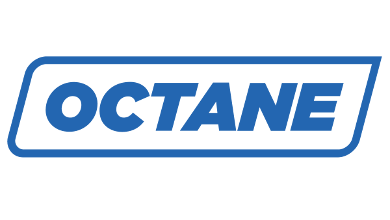Combating RECT With a DMS Solution
Don Miller of Integrated Dealer Systems explains how to make it make sense for your entire dealerships team.

We all know RECT is a major focus for dealerships. Repair Event Cycle Time is the industry term for getting customers in, their repairs squared away, and their rigs back on the road, and making it better is a top priority. Here, RV PRO asked Don Miller, senior data consultant with Integrated Dealer Systems (IDS), to explain how reports from a DMS can help dealerships create efficiency. With more than 30 years of experience, Miller works with dealerships on training, consulting and analytical services and is the creator of IDS’ RECT report, which won the RVDA Chairman’s Service Award.
- What should be a dealership’s first step when a customer comes in for a repair?
The all-important walkaround (or as some call it – triage) should be the service writer’s first step when the customer arrives for their appointment. Go around the unit with the customer, take good notes of all the customer’s concerns or requests, and take pictures of any affected parts or components. Keep the customer informed of the possible costs (diagnostic charges if applicable) and the estimated timeframe to complete the initial diagnosis of the problem.
2. What can a service department do to help move a customer’s RV along in the repair process?
Effective internal communication. Promptly updating the dealership’s DMS with good notes and complete information is a must. This will allow the technicians to properly translate the work that needs to be done. Based on the technician’s input, the parts department personnel will know what parts are needed and if they need to order any parts. If the DMS is updated at every step, the repair process can continue to move forward. Also, the service writer (or anyone at the dealership) can provide the customer with updates on the status of their repair.
3. How can reports from a DMS help prevent bottlenecks?
Reports won’t prevent bottlenecks, but they can help identify the dealership’s main bottlenecks – typically warranty coverage and out-of-stock parts. DMS reports will reflect the average cycle times of work orders completed during a specific time (typically a month). This average should only include the work orders of the dealership’s customers, filtering out any internal work orders. By comparing this average to the average cycle times of work orders with warranty coverage and those with out-of-stock parts completed during the same timeframe, a dealer can quantify the actual impact these bottlenecks have on the dealership’s cycle times and determine where to concentrate their efforts.
4. What insights can a Repair Event Cycle Time (RECT) report help a dealership learn about its process?
A detailed R.E.C.T. report not only provides cycle time averages of the main bottlenecks but dissects the bottlenecks down to their individual components. These components can help the dealership better pinpoint the weakest link (or links) in their process, such as triage setups, warranty authorizations, internal communication, or customer communication.
Another benefit of the R.E.C.T. reports offered by DMS vendors is the historical trends they provide. Tracking a dealership’s cycle time averages over time presents a dealer with the ability to visualize their progress and determine if their efforts exhibited the intended results.
5. How can comparing these reports against those of other dealers in the area help with forecasting?
As with many aspects of the RV industry, Repair Event Cycle Times are seasonal and can vary wildly depending on which region of the country the dealership is located. So many of the R.E.C.T. reports provide regional historical averages in addition to a national average. Comparing a dealership’s R.E.C.T. to that of other dealerships in the same region over the same time frame can provide important historical insight. This, in turn, can be a valuable tool when forecasting cycle times.
6. How can a service department manager encourage the implementation of a DMS and get buy-in from the team?
It hinges on communication and transparency. Talk to every team member. Ask them what they’re currently struggling with and what their challenges are, then note it down. It’s paramount to take the time to ensure everyone is heard because their concerns will give you insights into how a DMS can address their specific challenges. Once you understand their challenges, then you’re in a much better position to articulate the benefits of the DMS in a context that resonates with their day-to-day experiences. This personalized approach makes it evident to the team that the proposed solution isn’t just another top-down decision, but a thoughtful response to their expressed needs.
– Don Miller, Integrated Dealer Systems



